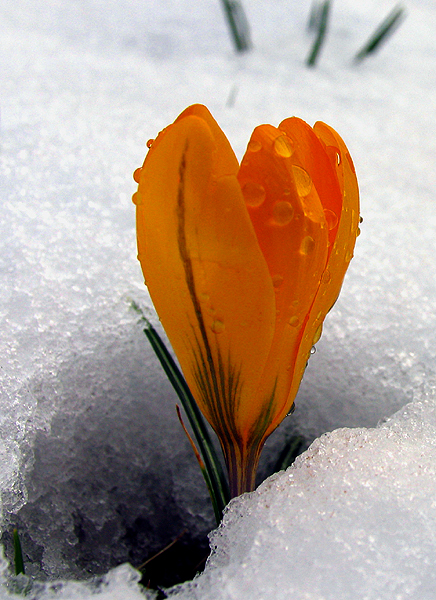
Research has revealed the order in which flowering plants evolved strategies, such as shedding leaves or retreating underground, which let them spread around the globe by surviving cold climates.
The research, by an international team that includes UNSW scientists, involved assembling the largest evolutionary tree so far of flowering plants, showing the relationship between more than 32,000 species.
The world’s earliest flowering plants are thought to have been restricted to warm tropical environments and to have been woody – with a prominent stem above the ground. It has long puzzled scientists how they managed to expand into colder areas and dominate large swathes of the planet by coping with freezing conditions.
“Freezing is a challenge for plants. Their living tissues can be damaged. It’s like a plant’s equivalent to frostbite. Their water-conducting pipes can also be blocked by air bubbles as water freezes and thaws,” says Amy Zanne, the study’s lead author and an assistant professor of biology in the George Washington University’s Columbian College of Arts and Sciences.
“So over time, if plants moved into colder climates, they’ve had to figure out how to get around these problems.”
The team includes UNSW’s Dr Will Cornwell and Professor Angela Moles. The results of their study are published in the journal Nature.
“One of the biggest mysteries in plant evolution has been the global rise to dominance of flowering plants. This work gives us a lot more detail about how that occurred on a global scale,” says Dr Cornwell.
Dr Zanne’s team identified three repeated evolutionary shifts they believe flowering plants made to fight the cold.
Plants either dropped their leaves in colder seasons, shutting down the transport networks that would normally carry water between the roots and the leaves. Examples include maples and oaks.
Or they developed thinner water-conducting pipes in the stem, allowing them to keep their leaves in winter by reducing the risk of air bubbles developing during freezing and thawing. Examples include many Australian species such as Eucalyptus species.
Or, they avoided the cold seasons altogether by becoming herbs, losing their above-ground stems and leaves and retreating underground as seeds or storage organs during winter. Examples include tulips and tomatoes.
The researchers also identified the order of these evolutionary events. Woody plants most often became herbs, or developed thinner water-conducting pipes, before they moved into freezing climates. In contrast, plants usually began dropping their leaves after they had moved into freezing climates.
Identifying these evolutionary adaptations and likely paths to them required the team to build two robust sets of data. First, Dr Zanne and her colleagues created a database of 49,064 species, detailing whether each species maintains a stem above the ground; loses or keeps its leaves; and the width of its water-carrying pipes.
They also added whether a species is ever exposed to freezing conditions, using resources from the Global Biodiversity Information Facility and a global climate database.
Then, researchers took that information and combined it with an unprecedented “timetree”- a genetically dated evolutionary tree of 32,223 species of plants. This allowed them to model the evolution of the species’ traits and climate surroundings.
“Until now, we haven’t had a compelling narrative about how leaf and stem traits have evolved to tolerate cold temperatures,” Dr Zanne says. “Our research gives us this insight, showing us the whens, hows and whys behind plant species’ trait evolution and movements around the globe.”
To build on these findings, Dr Zanne and others will use the massive timetree to explore other aspects of the evolutionary history of plants, especially to examine how plants respond to other environmental pressures besides freezing.
Media contacts:
Dr Will Cornwell: w.cornell@unsw.edu.au
UNSW Science media: Deborah Smith, 9385 7307, 0478 492 060, Deborah.Smith@unsw.edu.au
